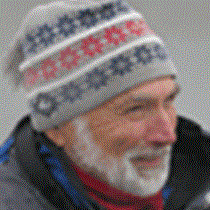Loreto & Cruising
The red light of dawn cast over the Sierra de la Giganta mountains as we pulled away from our overnight anchorage. This is a place where it doesn’t matter where you look; it’s all wild and beautiful. Wild because tourism has only brushed against these giant mountains, and the population density has always been low. It’s deeply comforting to know that Mexico is acutely aware that this area is a jewel in a raw landscape. These craggy cliffs are on the west side of the Bay of Loreto National Marine Park founded in 1996.
The land rises abruptly here because of a geologic fault. When Baja California became part of the Pacific Plate about 5 million years ago, it began a slow exodus from Mexico. This land was ripped away from the mainland and not only moved north and a bit west but also began to tilt. The side we are adjacent to moved upward in catastrophic events that rattled the teeth of burros and transformed stone churches like the one in Loreto to piles of rubble as in 1877. This wouldn’t surprise a geologist much; this is how ocean basins like the Gulf of California are formed. Thousands of hurricanes sculpted many of the canyons that give the mountains in the photo all their texture. The layered cliffs are made of volcanic debris that fell long before the gulf existed and tell another story.
We walked around Loreto during the morning under the shadow of the rebuilt mission. Clearly etched below an alcove is the date 25 Oct 1697. Above the alcove is the Virgin of Loreto holding the child Jesus. According to an employee of the Museo de las Missiones, she has no arms because she gave them to the fishermen. That selfless act gained her the honor of being the Lady of Loreto to be memorialized in stone above the door of the mother of all missions. It was from Loreto that missions were founded all over Baja California. Loreto is a town of soft textures, a sleepy rhythm and laid-back venders, a place most anyone would enjoy.
We cruised south in the afternoon. Bottlenose dolphins rode our bow for a while, a California sea lion passed later, and a series of whale blows teased us before the animal vanished. The ship’s motion gently rocked us through the night.
The red light of dawn cast over the Sierra de la Giganta mountains as we pulled away from our overnight anchorage. This is a place where it doesn’t matter where you look; it’s all wild and beautiful. Wild because tourism has only brushed against these giant mountains, and the population density has always been low. It’s deeply comforting to know that Mexico is acutely aware that this area is a jewel in a raw landscape. These craggy cliffs are on the west side of the Bay of Loreto National Marine Park founded in 1996.
The land rises abruptly here because of a geologic fault. When Baja California became part of the Pacific Plate about 5 million years ago, it began a slow exodus from Mexico. This land was ripped away from the mainland and not only moved north and a bit west but also began to tilt. The side we are adjacent to moved upward in catastrophic events that rattled the teeth of burros and transformed stone churches like the one in Loreto to piles of rubble as in 1877. This wouldn’t surprise a geologist much; this is how ocean basins like the Gulf of California are formed. Thousands of hurricanes sculpted many of the canyons that give the mountains in the photo all their texture. The layered cliffs are made of volcanic debris that fell long before the gulf existed and tell another story.
We walked around Loreto during the morning under the shadow of the rebuilt mission. Clearly etched below an alcove is the date 25 Oct 1697. Above the alcove is the Virgin of Loreto holding the child Jesus. According to an employee of the Museo de las Missiones, she has no arms because she gave them to the fishermen. That selfless act gained her the honor of being the Lady of Loreto to be memorialized in stone above the door of the mother of all missions. It was from Loreto that missions were founded all over Baja California. Loreto is a town of soft textures, a sleepy rhythm and laid-back venders, a place most anyone would enjoy.
We cruised south in the afternoon. Bottlenose dolphins rode our bow for a while, a California sea lion passed later, and a series of whale blows teased us before the animal vanished. The ship’s motion gently rocked us through the night.




